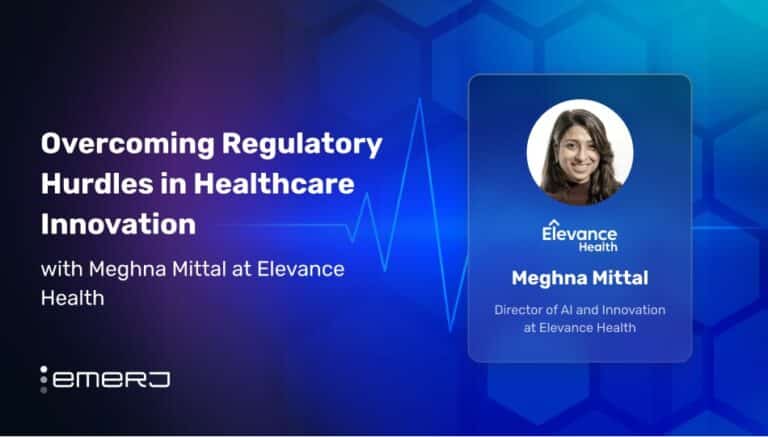Episode Summary: In this episode of the podcast, we interview AIG’s Chief Data Science Officer, Dr. Nishant Chandra, about natural language processing (NLP) for internal and team communication. Dr. Chandra talks about how NLP can help with sharing documents with specific team members whose roles warrant viewing those documents.
Instead of a broad memo that would go out across the company, a document could be transformed to a tailored message depending on the individual receiving it. For instance, a document could be presented in a digestible way to the executive team, but be distilled to contain fewer details for the technology team to make it relevant to them. How might NLP serve this summarization role for internal communications in the next 5 years?
Subscribe to our AI in Industry Podcast with your favorite podcast service:
Guest: Dr. Nishant Chandra, Chief Data Science Officer at AIG
Expertise: AI, natural language processing, machine learning, pattern recognition
Brief Recognition: Dr. Nishant Chandra leads the AIG Science R&D group in India, where he develops natural language, text mining, and machine learning model. He is also responsible for the development of NLP platforms and applications such as privileged text classification, contextual summarization, and conversational sentiment abstraction.
Prior to AIG, Dr. Chandra drove innovation in the banking, financial services, insurance, e-commerce, R&D, and mobile telecom industries in the US and India. He was recently recognized by Analytics India magazine as among the country’s top 10 data scientists. The US Department of Homeland Security has also recognized Dr. Chandra as an outstanding researcher.
He holds five patents and is a published author in NLP in a number of journals and conference publications. He obtained his Ph.D. in Electrical and Computer Engineering from Mississippi State University.
Interview Highlights
The following is a condensed version of the full audio interview, which is available in the above links on Emerj’s SoundCloud and iTunes stations.
(03:40) How is it possible to summarize documents and share contexts between people, and how do you explain it to companies?
Nishant Chandra: What we want to do is take academic use cases and make it significantly useful in the production of AI in industry. In natural language processing (NLP) document summarization, the user can find the keywords and summarize it. The hierarchical approach to this is to take that document and create context. A legal document may have legal context from financial data and medical data. If someone wants to summarize the financial part of the document, they should be able to do that. It gives teams granularity to read through just the financial data. It also creates user-level access to the data. The technology team, who may not be authorized to read the financial dealings, can have the granularity of access to the data.
(05:36) Right now, there might not be an interface where you can choose your context from a dropdown and receive a customized summary. It is clearly more complicated. What I imagine now is different types of summarization for different types of contextual areas. What does that look like?
NS: In today’s world, search engines are very useful. A web page will have multiple tags, and each of those tags lets the user know that the information around that tag is available on this page. Contextual summarization is taking that concept to a new level. Instead of one keyword or tag, the user can look at multiple documents or web pages.
For instance, the user needs to find information about every patient who has a specific type of cancer, was a nonsmoker, and other descriptions. We have created an entire ecosystem where in-depth analysis can be done from a huge amount of text data and presented to the audience in a very concise, clear and useful manner.
(08:00) So there are more criteria required to get contextual summarization. We will need clusters, concepts, factors and features and get what is useful from not just one document but from a library of documents.
NS: Yes. And from that library of documents, the user can query something else. Taking our example of the cancer research, which cases resulted in a legal dispute? Or search for the distribution of the disease within a certain age group. The same document can be contextually summarized in a variety of ways to make it useful for people in different use cases.
(08:55) In the future, some degree of deeper text urgent insight that is derivable from text libraries will become more common. What will the office world or team communication look like three years into the future? How will it change business?
NS: In the last 15 years, search has been the single most important criteria in the success of professional life. In 2000, search was seen as the problem, then we realized how much it changed our lives. What is the next search and where are we finding limitation in documents? At the moment, when we conduct a search, we find individual documents, click every link, open multiple tabs and create a cohesive story from all these tabs.
The search of the next generation will be presented in a very concise manner, as machine learning algorithms will understand what context you are looking for.
(12:35) What if search knew our intent and could put the actual answers and meaning together? How would people enter their intent when they do search? And how will search find the pages and distill the insights that are relevant to the user’s goals? Could there be an interface for that?
NS: Like any problem, intelligence also needs a level of human comprehension. User interface is complex, but I imagine this domain improving over time. I see context being derived from a user’s past searches. It is possible to heuristically predict it or explicitly provide it. I see typing as fading away because it slows the thinking process
(15:45) The qwerty keyboard as the mode of interface with machines has to improve for the flow or level of depth that we imagine.
NS: It’s teamwork. We all will come together and make it better for all.
Header Image Credit: Gordonfischerlawfirm.com






















